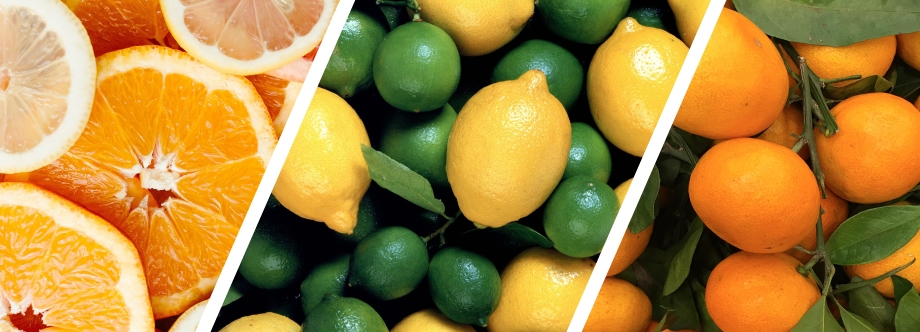Citrus Concentrate: A Flavourful Pantry Essential
Citrus concentrate is a versatile and powerful ingredient derived from citrus fruits like oranges, lemons, limes, and grapefruits. It involves removing the water content from the fruit juice, resulting in a concentrated form that retains the fruit's natural flavors, nutrients, and aromatic compounds. This concentrated essence of citrus fruits has become an essential component in various industries, including food and beverages, cosmetics, and pharmaceuticals, due to its robust flavor profile and health benefits.
One of the primary applications of citrus concentrate is in the food and beverage industry. It is commonly used to enhance the flavor of juices, sodas, and energy drinks. By reconstituting the concentrate with water, manufacturers can create beverages that offer a consistent and vibrant citrus taste year-round, regardless of the fruit's seasonal availability. Additionally, citrus concentrate is used in the production of jams, jellies, candies, and baked goods, providing a natural and refreshing flavor that appeals to consumers. Its concentrated form allows for easy storage and transportation, reducing costs and minimizing spoilage.
Beyond its flavor-enhancing properties, citrus concentrate is prized for its nutritional benefits. Citrus fruits are renowned for their high vitamin C content, which is crucial for maintaining a healthy immune system, promoting skin health, and reducing the risk of chronic diseases. The concentration process preserves these essential nutrients, making citrus concentrate an excellent source of vitamins and antioxidants. Furthermore, the presence of flavonoids and other phytochemicals in citrus concentrate contributes to its anti-inflammatory and anticancer properties, offering additional health benefits.
In the cosmetic industry, citrus concentrate is a valuable ingredient due to its natural acidity and rich vitamin C content. It is often included in skincare products like cleansers, toners, and serums to brighten the complexion, reduce the appearance of dark spots, and promote collagen production. The refreshing scent of citrus also makes it a popular choice for fragrances and personal care items like shampoos and body washes. Its natural antibacterial properties can help maintain skin health and prevent acne.
The pharmaceutical industry also benefits from citrus concentrate. Its high vitamin C content supports immune function and recovery from illnesses, making it a common additive in dietary supplements and cold remedies. Moreover, the bioactive compounds in citrus concentrate are being studied for their potential to prevent and treat various health conditions, including cardiovascular diseases and cancer.
Despite its numerous benefits, the production of citrus concentrate must be carefully managed to ensure quality and safety. The concentration process involves heating the juice to evaporate the water, which can impact the flavor and nutrient content if not done correctly. Additionally, the sourcing of citrus fruits must adhere to sustainable and ethical practices to ensure the long-term viability of citrus farming.
In conclusion, citrus concentrate is a multifaceted ingredient with a wide range of applications in various industries. Its robust flavor, nutritional benefits, and versatility make it an invaluable component in food, beverages, cosmetics, and pharmaceuticals. As consumers continue to seek natural and healthy products, the demand for citrus concentrate is expected to grow, highlighting its importance in modern production and manufacturing.
https://www.marketdigits.com/citrus-concentrate-market-1707902796
Citrus concentrate is a versatile and powerful ingredient derived from citrus fruits like oranges, lemons, limes, and grapefruits. It involves removing the water content from the fruit juice, resulting in a concentrated form that retains the fruit's natural flavors, nutrients, and aromatic compounds. This concentrated essence of citrus fruits has become an essential component in various industries, including food and beverages, cosmetics, and pharmaceuticals, due to its robust flavor profile and health benefits.
One of the primary applications of citrus concentrate is in the food and beverage industry. It is commonly used to enhance the flavor of juices, sodas, and energy drinks. By reconstituting the concentrate with water, manufacturers can create beverages that offer a consistent and vibrant citrus taste year-round, regardless of the fruit's seasonal availability. Additionally, citrus concentrate is used in the production of jams, jellies, candies, and baked goods, providing a natural and refreshing flavor that appeals to consumers. Its concentrated form allows for easy storage and transportation, reducing costs and minimizing spoilage.
Beyond its flavor-enhancing properties, citrus concentrate is prized for its nutritional benefits. Citrus fruits are renowned for their high vitamin C content, which is crucial for maintaining a healthy immune system, promoting skin health, and reducing the risk of chronic diseases. The concentration process preserves these essential nutrients, making citrus concentrate an excellent source of vitamins and antioxidants. Furthermore, the presence of flavonoids and other phytochemicals in citrus concentrate contributes to its anti-inflammatory and anticancer properties, offering additional health benefits.
In the cosmetic industry, citrus concentrate is a valuable ingredient due to its natural acidity and rich vitamin C content. It is often included in skincare products like cleansers, toners, and serums to brighten the complexion, reduce the appearance of dark spots, and promote collagen production. The refreshing scent of citrus also makes it a popular choice for fragrances and personal care items like shampoos and body washes. Its natural antibacterial properties can help maintain skin health and prevent acne.
The pharmaceutical industry also benefits from citrus concentrate. Its high vitamin C content supports immune function and recovery from illnesses, making it a common additive in dietary supplements and cold remedies. Moreover, the bioactive compounds in citrus concentrate are being studied for their potential to prevent and treat various health conditions, including cardiovascular diseases and cancer.
Despite its numerous benefits, the production of citrus concentrate must be carefully managed to ensure quality and safety. The concentration process involves heating the juice to evaporate the water, which can impact the flavor and nutrient content if not done correctly. Additionally, the sourcing of citrus fruits must adhere to sustainable and ethical practices to ensure the long-term viability of citrus farming.
In conclusion, citrus concentrate is a multifaceted ingredient with a wide range of applications in various industries. Its robust flavor, nutritional benefits, and versatility make it an invaluable component in food, beverages, cosmetics, and pharmaceuticals. As consumers continue to seek natural and healthy products, the demand for citrus concentrate is expected to grow, highlighting its importance in modern production and manufacturing.
https://www.marketdigits.com/citrus-concentrate-market-1707902796
Citrus Concentrate: A Flavourful Pantry Essential
Citrus concentrate is a versatile and powerful ingredient derived from citrus fruits like oranges, lemons, limes, and grapefruits. It involves removing the water content from the fruit juice, resulting in a concentrated form that retains the fruit's natural flavors, nutrients, and aromatic compounds. This concentrated essence of citrus fruits has become an essential component in various industries, including food and beverages, cosmetics, and pharmaceuticals, due to its robust flavor profile and health benefits.
One of the primary applications of citrus concentrate is in the food and beverage industry. It is commonly used to enhance the flavor of juices, sodas, and energy drinks. By reconstituting the concentrate with water, manufacturers can create beverages that offer a consistent and vibrant citrus taste year-round, regardless of the fruit's seasonal availability. Additionally, citrus concentrate is used in the production of jams, jellies, candies, and baked goods, providing a natural and refreshing flavor that appeals to consumers. Its concentrated form allows for easy storage and transportation, reducing costs and minimizing spoilage.
Beyond its flavor-enhancing properties, citrus concentrate is prized for its nutritional benefits. Citrus fruits are renowned for their high vitamin C content, which is crucial for maintaining a healthy immune system, promoting skin health, and reducing the risk of chronic diseases. The concentration process preserves these essential nutrients, making citrus concentrate an excellent source of vitamins and antioxidants. Furthermore, the presence of flavonoids and other phytochemicals in citrus concentrate contributes to its anti-inflammatory and anticancer properties, offering additional health benefits.
In the cosmetic industry, citrus concentrate is a valuable ingredient due to its natural acidity and rich vitamin C content. It is often included in skincare products like cleansers, toners, and serums to brighten the complexion, reduce the appearance of dark spots, and promote collagen production. The refreshing scent of citrus also makes it a popular choice for fragrances and personal care items like shampoos and body washes. Its natural antibacterial properties can help maintain skin health and prevent acne.
The pharmaceutical industry also benefits from citrus concentrate. Its high vitamin C content supports immune function and recovery from illnesses, making it a common additive in dietary supplements and cold remedies. Moreover, the bioactive compounds in citrus concentrate are being studied for their potential to prevent and treat various health conditions, including cardiovascular diseases and cancer.
Despite its numerous benefits, the production of citrus concentrate must be carefully managed to ensure quality and safety. The concentration process involves heating the juice to evaporate the water, which can impact the flavor and nutrient content if not done correctly. Additionally, the sourcing of citrus fruits must adhere to sustainable and ethical practices to ensure the long-term viability of citrus farming.
In conclusion, citrus concentrate is a multifaceted ingredient with a wide range of applications in various industries. Its robust flavor, nutritional benefits, and versatility make it an invaluable component in food, beverages, cosmetics, and pharmaceuticals. As consumers continue to seek natural and healthy products, the demand for citrus concentrate is expected to grow, highlighting its importance in modern production and manufacturing.
https://www.marketdigits.com/citrus-concentrate-market-1707902796
0 Kommentare
0 Anteile











